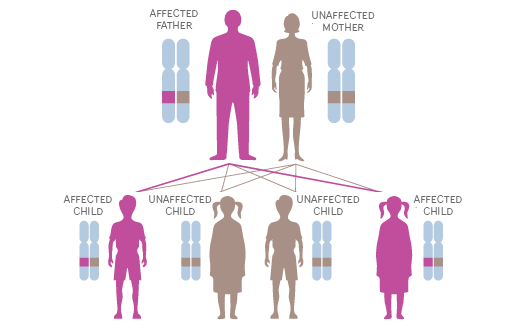Transmission of hereditary mutations
All cells carry two copies (two alleles) of every gene (one copy inherited from the mother, the other from the father), with each allele in a different molecule of DNA.
When we reproduce we pass to the new baby one copy of our DNA, with the other coming from the other parent so the baby ends again with 2 copies of each gene.
This is why a new baby tends to look a lot like both parents, but is still a different individual.
The decision of which DNA copy we give to our child is a random process.
This means that carriers of cancer mutations, with one mutated copy and one healthy, have a 50/50 chance of passing the mutated gene to their children.
In other words, any child of a carrier has a 50% chance of having the mutation and being a carrier too.

Important:
- Most hereditary (cancers) mutations affect autosomal genes(an autosomal gene is a gene that is not linked to gender, so it exists in both males and females).
This means that women and men have the same chance of inheriting and transmitting the mutation.

